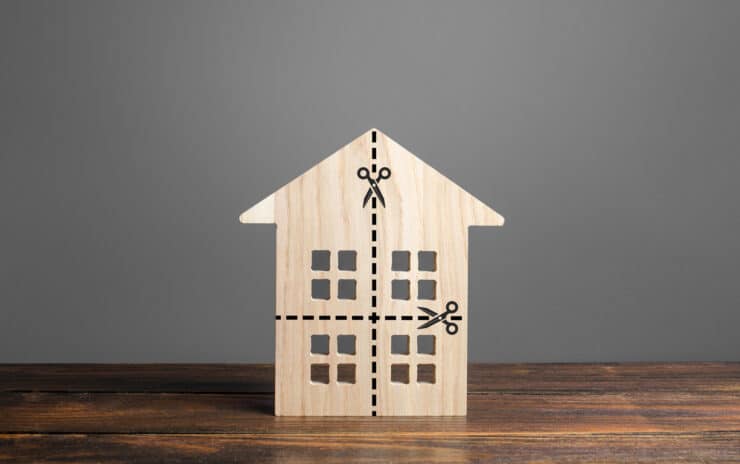Do One Thing: Check your expectations before assuming you need a certain sized house or apartment. You may need less space than you think. Often, cozier homes cost less than bigger ones.
There’s no escaping the fact that the path to homeownership for millions of Americans is pretty rough right now. Interest rates remain high while the number of homes on the market is staggeringly low.
The estimated housing expenses—when you include a monthly payment, homeowners insurance, and property taxes—needed to buy a median-priced home in the U.S. reached $3,000 a month in spring 2023, according to an annual report from Harvard University’s Joint Center for Housing Studies.
But hope for homeownership is not lost. Although renting may be a better deal for many at the end of 2023, interest rates are expected to start edging down in 2024. That could mean the dream of buying your own place may likely be in reach again.
Here are some solid strategies for reducing your housing costs now—including your rent or mortgage, plus taxes and insurance—while continuing to plan for your future.
Consider Downsizing
Whether you rent or own, moving into smaller quarters could mean shelling out less money every month. While this may not sound like a viable option—because moving can be stressful—it’s certainly a way to save.
Plus, unconventional times call for out-of-the-box thinking, says Laura Lynch, a certified financial planner and founder of Financial Planning with Tiny-Living Values.
“Considering alternatives to the typical American dream house can help reduce housing costs,’’ she notes. “A tiny house costs (about) one-third of the average sales price of a regular home in 2023. This lower home cost includes a lower tax, rent, and insurance cost and is equivalent to giving yourself a 66% pay raise.” Plus, even if you don’t go tiny — going smaller can make a big difference.
Negotiate Your Rent
It’s wise to remember that almost everything in life is negotiable, including rent (and amenities). With pandemic pricing easing up in many markets, don’t immediately assume you’ll have to pay more next year, or even next month.
“Look to see if your landlord has listed your place on sites like Zillow, Trulia, or Realtor.com as well as their own website,” notes Bri Conn, co-host of the Childfree Wealth Podcast. “While the prices should be the same, they may not be—and may even be less than what you’re currently paying.”
Another tip: Ask if there are different rates available based on different lease lengths, Conn suggests, adding “many places will lower your monthly rate if you sign a longer lease term. Some change the monthly price if you start a lease in the middle of the month vs. the beginning or end.”
For current tenants looking to renew a lease, you should pay attention to how often your landlord offers referral bonuses and take note of the specific amount being offered. “If you start to notice they’re emailing you on a more regular basis offering a bonus or increasing the dollar amount,” Conn says, “it could be a sign they’re struggling to sign tenants. If you’re planning on renewing, this can help give you leverage and potentially keep your rate the same.”
Improve Your Credit Score
Financial institutions aren’t the only organizations who use credit scores to decide how much to lend potential home buyers and at what rate. Landlords also use credit scores to help determine how much renters are charged. That means getting to work on building up your credit score could mean a lower rate on your rent or mortgage.
Look Into Adjustable Rate Mortgages
You may have heard the saying “Marry your house, but date your rate.” That’s where adjustable rate mortgages can come in. Also known as ARMS — they are mortgages with a variable rate that can change annually. With interest rates still high on some other loans, the new ARMs can be appealing. Why? Because using an ARM often allows a buyer to receive a lower interest rate on the first few years of a home loan when compared to a traditional 15- or 30-year loan.
Manage Your Expectations
Don’t let yourself get sucked into buying more house than you can afford or even need. Lynch, the tiny home advocate, notes that houses have been growing in square-footage over time while families have been shrinking. “It is our expectation,” she says, “of our home size that keeps us trapped in buying such a high-cost roof and paying for it for such a long time.”
With reporting by Casandra Andrews






